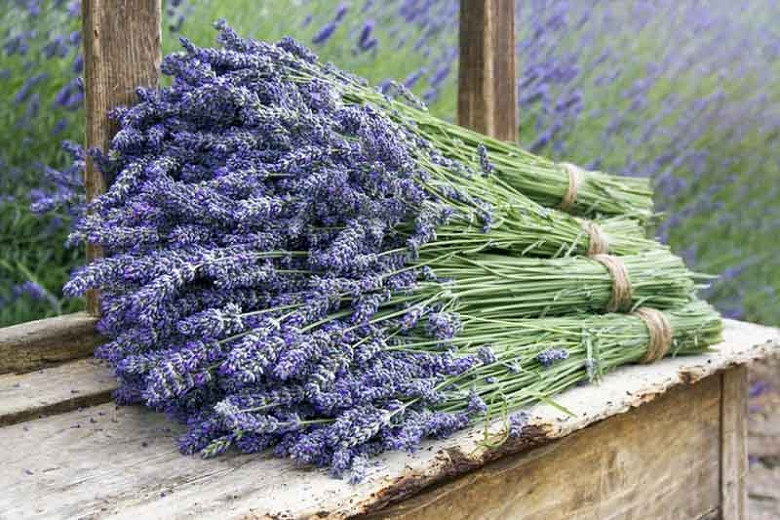Your cart is currently empty!

English Lavender Growing Tips

English lavender (Lavandula angustifolia) is an aromatic perennial that’s known for its fragrant flowers. It’s a great addition to perennial borders, herb gardens, and scent gardens.
It’s hardy north to Zone 5, but it requires a cool spot with protection from frost. It’s also prone to root rot, so it needs good drainage in well-draining soil.
Planting
Lavender is a very easy flowering shrub to grow. It is a low maintenance garden plant that requires little attention other than pruning twice a year (in late spring and fall).
English lavender plants have compact spikes of small, single flowers. They are a good choice for use as the centerpiece of a border or tucked into corners and edges of beds.
They don’t require much watering, and are drought tolerant in most areas. It is a good idea to check soil moisture regularly by feeling the soil with your finger.
If the soil is still moist, forgo watering for a few days. This will help to dry the soil out a bit and prevent rot.
If you’re growing English lavender in pots, make sure to fill the container with a good quality, well-draining soil mix. Place a layer of drainage material such as pebbles in the container before you spread the soil over it.
Pruning
Lavender is a shrubby herb, so pruning should be done throughout the seasons to help maintain its healthy appearance and encourage good root development. It’s especially important to remove any parts of the plant that might become trapped in the soil, promoting early frost in winter.
Pruning young lavender plants is particularly important because the base of the plant can get woody and break when not trimmed regularly. This can lead to the whole plant becoming unwieldy and prone to winter damage from snow loads or frozen ground.
In its first year, lavender should be pruned back just a few centimeters to encourage nice rounded shape and lush branches (on the photo below, my one-year-old plant is from cuttings).
Once your lavender is more mature, you can start pruning more regularly to achieve a rounded, bushy shape that produces plenty of flowers. In the late spring, after flowering has finished, and in the fall after it has gone dormant, prune the stems to two or three buds.
Fertilizing
Lavender plants need a well-drained soil with a pH of 6.5 to 7. They do not like wet or waterlogged soils.
If your soil is a little heavy, amend it with compost and/or aged manure to improve drainage before planting. In wet climates, consider growing lavender in a raised bed or on a slope to encourage faster drainage.
A small amount of fertilizer is often all that is needed to encourage lavender blooms and keep the plant healthy. A slow-release, nitrogen-based plant food such as Miracle-Gro(r) Performance Organics(r) Blooms Plant Nutrition can provide the nutrients lavender needs without harming the plant.
Over-fertilizing lavender can result in more foliage and reduced flowers, which can lead to disease issues and a poorer yield. Over-fertilizers also create a buildup of unused nutrients in the soil and may kill lavender plants.
Watering
Lavender plants like drier soils, so don’t overwater them. They’ll grow fine without it, but if you want them to look their best, water them deeply once a week during the summer and less often in winter.
Potted lavenders need to be kept moist until they’re established, then cut back their watering to once a day or every other day. When you start growing them from seed, water daily until they sprout.
If you want to mulch around your lavender plants, pick gravel instead of woody weeds. That will help to keep moisture out of the ground and protect the roots. But don’t use organic mulches, as they can trap too much moisture.
by
Tags: